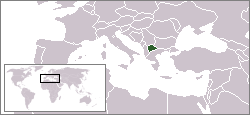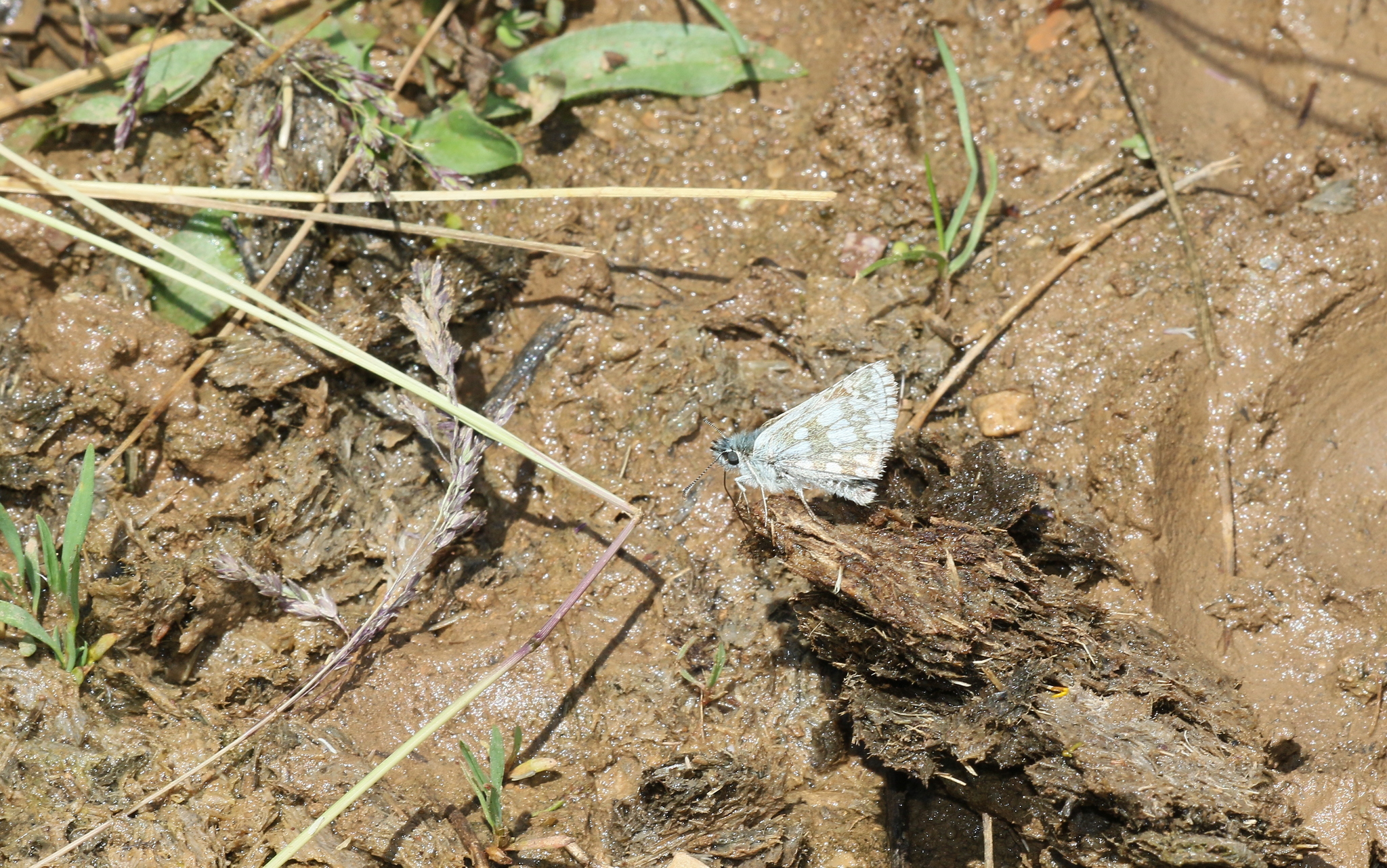|
List Of Lepidoptera Of North Macedonia
The Lepidoptera of North Macedonia consist of both the butterflies and moths recorded from North Macedonia. Butterflies Hesperiidae *''Carcharodus alceae'' (Esper, 1780) *''Carcharodus floccifera'' (Zeller, 1847) *''Carcharodus lavatherae'' (Esper, 1783) *'' Carcharodus orientalis'' Reverdin, 1913 *''Erynnis marloyi'' (Boisduval, 1834) *''Erynnis tages'' (Linnaeus, 1758) *''Gegenes nostrodamus'' (Fabricius, 1793) *'' Hesperia comma'' (Linnaeus, 1758) *''Muschampia cribrellum'' (Eversmann, 1841) *''Muschampia proto'' (Ochsenheimer, 1808) *''Muschampia tessellum'' (Hübner, 1803) *''Ochlodes sylvanus'' (Esper, 1777) *''Pyrgus alveus'' (Hübner, 1803) *''Pyrgus andromedae'' (Wallengren, 1853) *''Pyrgus armoricanus'' (Oberthur, 1910) *''Pyrgus carthami'' (Hübner, 1813) *''Pyrgus cinarae'' (Rambur, 1839) *''Pyrgus malvae'' (Linnaeus, 1758) *''Pyrgus serratulae'' (Rambur, 1839) *'' Pyrgus sidae'' (Esper, 1784) *'' Spialia orbifer'' (Hübner, 1823) *''Spialia phlomidis'' (Herrich-Schä ... [...More Info...] [...Related Items...] OR: [Wikipedia] [Google] [Baidu] |
Pyrgus Andromedae
The Alpine Grizzled Skipper (''Pyrgus andromedae'') is a species of skipper (family Hesperiidae). Description This is a medium-sized ''Pyrgus'' skipper with a wingspan of 26–30 mm. The dark brown forewing is marked with a bold pattern of white spots; by contrast the hindwing is plain dark brown with little or no patterning. The underside of the hindwing has two distinctive pale markings close to the dorsum: an elongated streak and a round spot, often likened to an exclamation mark (!). In cases of doubt, an examination of the genitals should be carried out for a reliable determination. Range The Alpine Grizzled Skipper is the only boreo-alpine ''Pyrgus'' species in Europe. It is found at high altitudes in Europe. This species is found up to fairly high altitudes in the Alps, Pyrenees (rare) and Pirin and also at lower elevations in northern Scandinavia, where its range extends well into the Arctic Circle. It is also known from the Carpathians, southwest Bosnia, southwest Se ... [...More Info...] [...Related Items...] OR: [Wikipedia] [Google] [Baidu] |
Agriades Optilete
''Agriades optilete'', the cranberry blue, is a butterfly of the family Lycaenidae. It is found in north eastern Europe, the Alps, North Asia, Japan, Korea and north western North America. The length of the forewings is about 14 mm. The butterfly flies from June to August depending on the location. The larvae feed on ''Vaccinium oxycoccos'', ''Empetrum nigrum'', bilberry and other cranberry and '' Empetrum'' species. Description from Seitz L. optilete Knoch (79 b). This species is quite out of place in the present group of ''Lycaena'' in characters as well as habits, and would be much better placed in a later group than here where it stands in Staudinger-Rebel's Catalogue. Both wings very broad and their outer margins strongly rounded. Male above very dull dark violet-blue, sometimes with a broader black margin, sometimes without black margin. In the female only the basal half of the upperside is dusted with glossy blue scales. Underside dirty dust-grey, the ocelli very ... [...More Info...] [...Related Items...] OR: [Wikipedia] [Google] [Baidu] |
Agriades Dardanus
''Agriades pyrenaicus'', the Gavarnie blue, is a Palearctic butterfly of the family Lycaenidae. It is found in the Asturias mountains of north-western Spain, the Pyrenees, the southern Balkan Peninsula, Turkey, the Caucasus and Armenia. The habitat consists of alpine grassy rocky meadows where it is found at altitudes ranging from 1,500 to 2,200 meters. The wingspan is 22–28 mm. The wings are grey suffused with blue and the wings are bordered by a white line. On the upperside a grey discal spot centers each wing, on the underside the forewings are decorated with black dots circled in white and the hindwings have a sub-marginal line of white dots some centered yellow. The larvae feed on ''Androsace'' species. Subspecies *''A. p. pyrenaicus'' (central Pyrenees) *''A. p. asturiensis'' (Oberthür, 1910) (Picos de Europa) *''A. p. dardanus'' (Freyer, 1844) - Balkan blue (Balkans, Asia Minor, Caucasus, Armenia) smaller than ''pyrenaicus'', and the pale spots of the hindwing ben ... [...More Info...] [...Related Items...] OR: [Wikipedia] [Google] [Baidu] |
Thymelicus Sylvestris
The small skipper (''Thymelicus sylvestris'') is a butterfly of the family Hesperiidae. Appearance It has a rusty orange colour to the wings, upper body and the tips of the antennae. The body is silvery white below and it has a wingspan of 25–30 mm. This butterfly is very similar in appearance to the Essex skipper (''Thymelicus lineola''). In the small skipper, the undersides of the tips of the antennae are yellow orange, whereas they are black in the Essex skipper. The black area on the lower edge of the upper wings also differs. Like the other orange grass skippers the male has a distinctive black stripe made up of scent scales. Distribution This butterfly's range includes much of Europe (east to the Urals, including Ireland, Britain and Scandinavia), north Africa and the Middle East. It is typically occurring where grass has grown tall. Life cycle and food plants Eggs are laid loosely inside grass sheaths of the caterpillars food plants from July to August. The newly ... [...More Info...] [...Related Items...] OR: [Wikipedia] [Google] [Baidu] |
Thymelicus Lineola
__NOTOC__ ''Thymelicus lineola'', known in Europe as the Essex skipper and in North America as the European skipper, is a species of butterfly in the family Hesperiidae. With a wingspan of 2.5 to 2.9 cm, it is very similar in appearance to the small skipper, ''Thymelicus sylvestris''. They can be told apart by the forward-facing flattish part of the antenna tip: in the Essex Skipper this face is black, whereas in the Small Skipper it is orange or brown. In males, there is a difference in the scent mark. In Essex Skipper this is a fine, straight, short dark line on the forewing, parallel to the wing edge; in the Small Skipper males, this line is bolder and bent. This butterfly occurs throughout much of the Palaearctic region. Its range is from southern Scandinavia through Europe to North Africa and east to Central Asia. It was only identified in the UK in 1889, and its range is expanding both in England and in northern Europe. In North America, this butterfly was accidentally ... [...More Info...] [...Related Items...] OR: [Wikipedia] [Google] [Baidu] |
Thymelicus Acteon
The Lulworth skipper (''Thymelicus acteon'') is a butterfly of the family Hesperiidae. Its name is derived from Lulworth Cove in the county of Dorset, England, where the first specimens in Great Britain were collected in 1832 by English naturalist James Charles Dale. The species occurs locally across Central Europe, Asia Minor and North Africa, where its population is considered stable. Its numbers have declined in Northern Europe, leading to its European status of "vulnerable". Its range in Britain is restricted to the south coast of Dorset, however it is locally abundant and its numbers currently are perhaps at their greatest since its discovery there. With a wingspan of 24 to 28 millimetres, females being larger than males, the Lulworth skipper is a small butterfly, the smallest member of the genus ''Thymelicus'' in Europe and among the smallest butterflies in Britain. Aside from the size difference, the sexes are distinguished by females having a distinct circle of golden ... [...More Info...] [...Related Items...] OR: [Wikipedia] [Google] [Baidu] |
Spialia Phlomidis
''Spialia phlomidis'', the Persian skipper, is a butterfly of the family Hesperiidae. It is found in Albania, North Macedonia, Greece, southern Russia, Asia Minor and Iran. The habitat consists of dry steppe habitats at moderate elevations. The length of the forewings is 14–15 mm.The median band iscomplete and continuous. The triangular spot between veins 6 and 7 is strongly elongated, and the one in interspace 8 continued to the angle.Adalbert Seitz Friedrich Joseph Adalbert Seitz, (24 February 1860 in Mainz – 5 March 1938 in Darmstadt) was a German physician and entomologist who specialised in Lepidoptera. He was a director of the Frankfurt zoo from 1893 to 1908 and is best known for editi ... ''Die Großschmetterlinge der Erde'', Verlag Alfred Kernen, Stuttgart Band 1: Abt. 1, Die Großschmetterlinge des palaearktischen Faunengebietes, Die palaearktischen Tagfalter, 1909, 379 Seiten, mit 89 kolorierten Tafeln (3470 Figuren) Adults are on wing from June to July in on ... [...More Info...] [...Related Items...] OR: [Wikipedia] [Google] [Baidu] |
Spialia Orbifer
''Spialia orbifer'', the orbed red-underwing skipper or Hungarian skipper is a butterfly of the family Hesperiidae. It is found from south-eastern Europe and temperate Asia to Korea. The habitat consists of steppe on plains and grassy slopes in the mountains. This has sometimes been treated as a subspecies of ''Spialia sertorius'' but can be distinguished by the olive green (rather than reddish-brown) underside of the hindwing. The wingspan is 24–28 mm. Adults are on wing from April to August in one or two generations per year. The larvae feed on ''Rubus idaeus'', ''Sanguisorba officinalis'', ''Sanguisorba minor ''Sanguisorba minor'', the salad burnet, garden burnet, small burnet, burnet (also used for ''Sanguisorba'' generally), pimpernelle, Toper's plant, and burnet-bloodwort, is an edible perennial herbaceous plant in the family Rosaceae. It has fe ...'' and '' Potentilla gelida''. Subspecies *''Spialia orbifer orbifer'' (South-eastern Europe to south-western S ... [...More Info...] [...Related Items...] OR: [Wikipedia] [Google] [Baidu] |
Pyrgus Sidae
''Pyrgus sidae'', the yellow-banded skipper, is a species of skipper (family Hesperiidae). It is found in from the Iberian Peninsula (only an isolated occurrence in the Sierra de Gredos) through southern and eastern Europe , southeast France, the northwestern coastal areas of central Italy, then Istria (Slovenia and Croatia) and the Balkan peninsula, across Turkey, Transcaucasia, to Iran and Afghanistan. East of the Southern Ural mountains the range extends to northwest Kazakhstan and the west of the Tien Shan in the north. ''Pyrgus'' species are usually difficult to separate in the field but ''P. sidae'' is a notable exception. It is the largest member of the genus found in Europe with a wingspan of 32–38 mm and can be instantly recognized by two bold black-edged yellow bands on the underside of the hindwings. The dark brown upper forewings are also boldly marked with numerous large white spots. The adults fly in June and July. The larval food plant is ''Abutilon avicen ... [...More Info...] [...Related Items...] OR: [Wikipedia] [Google] [Baidu] |
Pyrgus Serratulae
The Olive Skipper (''Pyrgus serratulae'') is a species of skipper (family Hesperiidae). Description This is a relatively distinctive species by the standards of the genus, the upperside tending to be plainer than most of its congeners with only tiny white marks on the forewings and almost unmarked on the hindwings. The underside is usually mostly olive-green with paler markings. An oval basal spot on the underside of the hind wing is a mostly well-developed feature. Alpine individuals often have a strong, almost completely reduced pattern of bright points on the upper side of the wing. The wingspan is 24–28 mm which means that ''Pyrgus serratulae'' is a medium-sized ''Pyrgus'' species. Basically, there is a great possibility of confusion with butterflies of the ''Pyrgus alveus'' complex, which can also occur syntopically with ''P. serratulae'', as well as the other species of the genus ''Pyrgus''. Safe separation is possible through the genitals. Range It is a species of th ... [...More Info...] [...Related Items...] OR: [Wikipedia] [Google] [Baidu] |
Pyrgus Malvae
''Pyrgus malvae'', the grizzled skipper, is a butterfly species from the family Hesperiidae. It is a small skipper (butterfly) with a chequered pattern on its wings that appears to be black and white. This butterfly can be found throughout Europe and is common in central and southern regions of England. The butterfly prefers three major types of habitat: woodland, grassland, and industrial. Referenced as a superspecies, ''Pyrgus malvae'' includes three semispecies: ''malvae'', ''malvoides'', and ''melotis''. Eggs are laid on plants that will provide warmth and proper nutrition for development. As larvae, their movement is usually restricted to a single plant, on which they will build tents, unless they move onto a second host plant. Larvae then spin cocoons, usually on the last host plant they have occupied, where they remain until spring. Upon emerging as adult butterflies, grizzled skippers are quite active during the day and tend to favour blue or violet-coloured plants for ... [...More Info...] [...Related Items...] OR: [Wikipedia] [Google] [Baidu] |



